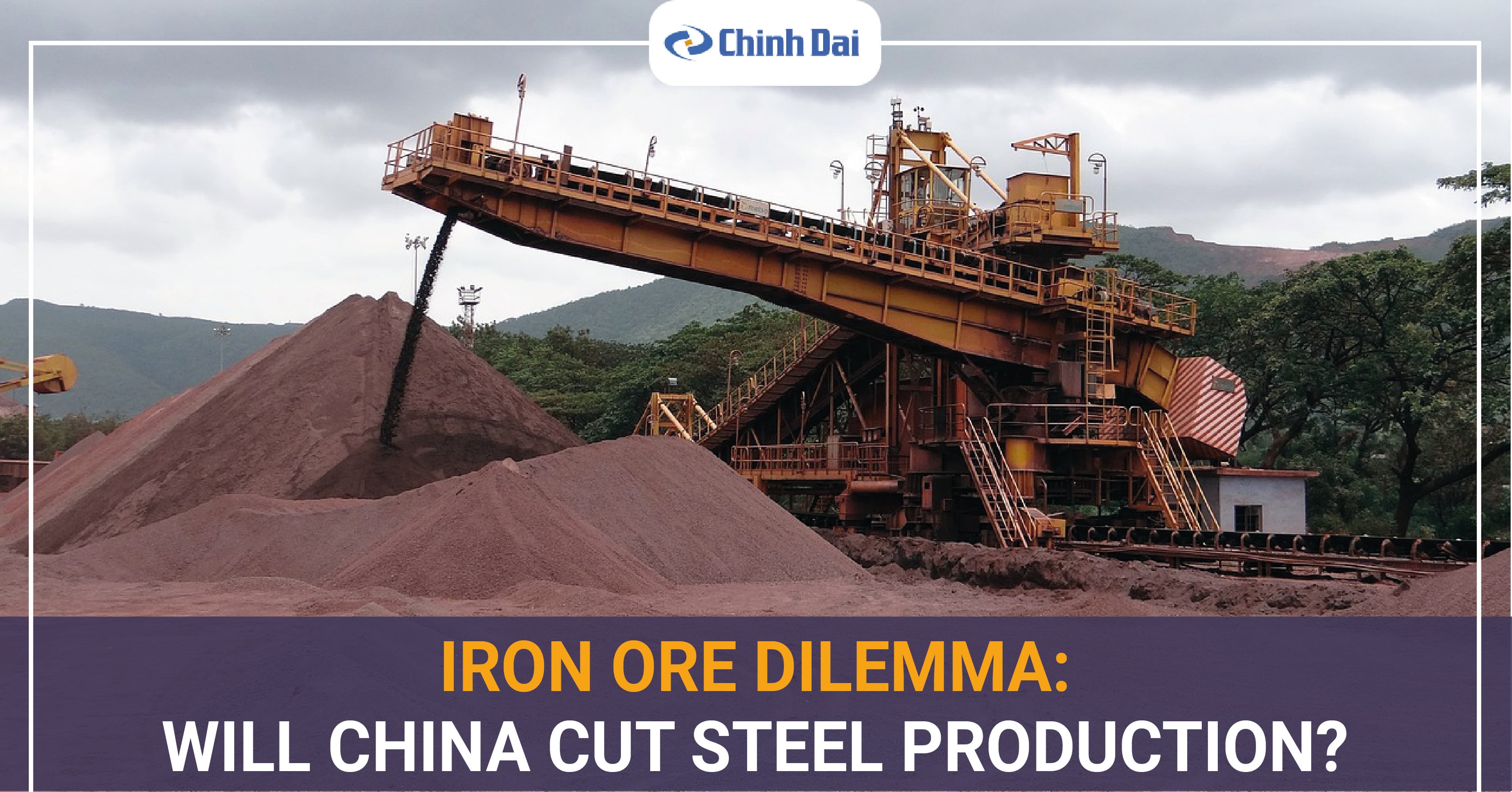
China’s vast steel industry, and its iron ore industry, is grappling with the seemingly contradictory policy impulse that the country will produce less this year, even as demand remains strong in the context of post-pandemic stimulus spending.
1. China steel production reaches records in 2020
China produced a record 1.05 billion tons of steel in 2020, helping to bring spot iron ore prices to a one-year high of $175.40 per ton on December 21st. During the year, prices were up about 75%.
According to the Argus price reporting agency, the spot price of the 62% iron ore standard delivered to North China, since then has fallen back below 160 USD per ton.
But the price has been above 150 USD per ton for almost two months, which is a strong performance considering that this steelmaking raw material has remained below 100 USD per ton for 5 years from May 2014 to May 2019.
2. Global iron ore supplies are affected
While China’s record steel production has played its part, global iron ore supplies are also affected by a series of problems at Brazil’s second-largest exporter, which has been disrupted by the pandemic. Mine was also shut down for safety reasons and fire last month at the export station.
The top Australian exporter has tried to keep its shipments high, but this is not enough to offset supply losses from Brazil and still meet Chinese demand.
The question for market participants is whether China will actually cut steel production in 2021 or continue its stimulus spending win as the authorities prioritize economic growth. pollution and energy consumption concerns.
3. China capacity and steel production will decline this year
Industry and Information Technology Minister Xiao Yaqing called on the steel industry to “resolutely” reduce production and ensure that there will be a year-over-year decline in 2021, according to a December 29 report from the news agency. tons of state Tan Hoa commune.
However, the industry ministry of the China Iron and Steel Association (CISA) expects steel demand to be higher this year amid supportive macroeconomic policies.
To solve this dilemma of how to cut steel production while still meeting demand, CISA is suggesting imports as a solution.
“We can increase imports of primary steel products, especially billets … to meet rising demand without increasing output,” CISA Vice President Luo Tiejun said at the conference on Monday. January 27.
If China curbs steel production in 2021 and increases its imports of steel products, it will create an incentive for China’s iron ore imports to drop slightly, while other manufacturers’ imports. increase the corresponding amount.
If this happens, it could mean iron ore prices are still supported as growing demand in the rest of the world will offset any decline in China’s raw material imports.
4. Demand for seaborne iron ore is recovering outside of China
According to January ship and port tracking data compiled by Refinitiv, global seaborne deliveries are estimated at 125.08 million tons. This number is likely to be revised higher when late arrivals are included in the review.
This is up from December’s 122.67 million tonnes and remains well below November’s 125.18 million tonnes, marking a recovery from pandemic-induced levels of less than 120 million tonnes in May and May. 6 years ago.
China’s seaborne imports were estimated at 93.05 million tons in January, up from 85.35 million in December, according to Refinitiv. Overall, the outlook is that global iron ore demand remains stable, and China has yet to show any sign of significant regulation.
There is still some question mark on Brazilian supplies, but perhaps not as much as 2020.
5. Can the current situation justify prices above $150 a ton?
History would suggest that not. There is no doubt that the forward curve for iron ore contracts traded in Singapore has declined in recent weeks, with the 6-month contract closing at $ 138.33 / ton on Jan. 29, down from 146, 48 USD at the beginning of the month.
Iron ore inventories at Chinese ports, overseen by consulting firm SteelHome, rose for the third week in the period ending Jan. 29, to 126.2 million tons, up from their lowest level. two months was 124.43 million in the week to January 8.
Stereotyped as the market remains stable, but in the case of iron ore, this seems to be a fitting description, with the outlook depending on whether the coming months suggest China is on the way. regulating steel production or not or their factories are still active.
Source: satthep.net
